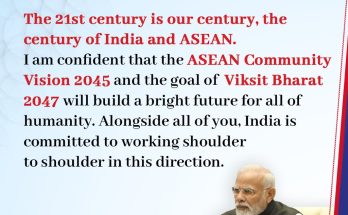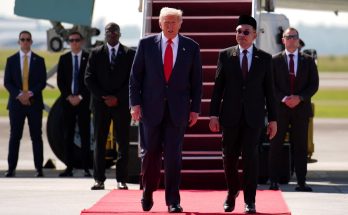
Updating both houses of parliament on latest developments in India-China relations, India’s External Affairs Minister Dr. S. Jaishankar declared that “disengagement has now been achieved in full in Eastern Ladakh”, and underlined that de-escalation will be the next step, followed by other steps to improve bilateral ties. “Through you I would like to inform the House, that disengagement has now been achieved in full in Eastern Ladakh through a step by step process, culminating in Depsang and Demchok,” Jaishankar told Lok Sabha, upper house of parliament, on December 3. “With the task of disengagement completed, it is now our expectation that discussions would commence in regard to the remaining issues that we had placed on the agenda,” he said. Looking ahead, Dr Jaishankar briefed members of parliament on “the direction of our ties with China in the near future.” “In the coming days, we will be discussing both de-escalation as well as effective management of our activities in the border areas,” he said.
“The conclusion of the disengagement phase now allows us to consider other aspects of our bilateral engagement in a calibrated manner, keeping our national security interests first and foremost,” he said. Alluding to his recent meeting with Chinese Foreign Minister Wang Yi in Rio de Janeiro, Dr Jaishankar said: “We reached an understanding that the Special Representatives and the Foreign Secretary level mechanisms will be convening soon.” Dr. Jaishankar emphasized that these achievements were the result of persistent diplomatic and military negotiations, involving 17 meetings of the Working Mechanism for Cooperation and Coordination (WMCC) and 21 rounds of talks between senior military commanders. He also noted that the disengagement process was verified on the ground, allowing patrols to resume in their traditional areas. The minister highlighted the diplomatic engagements that laid the groundwork for the October 21 agreement, including his meetings with Chinese Foreign Minister Wang Yi during the G20 Summit in Rio and discussions between India’s National Security Advisor and his Chinese counterpart. Furthermore, the understanding was endorsed during the BRICS Summit in Kazan, where Prime Minister Narendra Modi and Chinese President Xi Jinping agreed to stabilize and rebuild bilateral ties.
A Step Toward De-escalation
Dr. Jaishankar informed the House that the October 21 agreement resolves two key friction points in Eastern Ladakh—Depsang and Demchok—bringing the disengagement process to completion. He stressed that the next priority would be de-escalation, involving the withdrawal of massed troops along the Line of Actual Control (LAC) and addressing associated military deployments. Defence Minister Rajnath Singh also recently met his Chinese counterpart at the ASEAN Defence Ministers’ meeting, where both sides discussed the progress on disengagement and the need to build confidence for future steps. Dr. Jaishankar reaffirmed that India’s position remains clear: the LAC must be strictly respected, the status quo cannot be altered unilaterally, and past agreements must be fully adhered to.
Tensions Since 2020
The minister revisited the origins of the tensions in Eastern Ladakh, which began in April-May 2020 with China’s large-scale troop amassment along the LAC. This led to violent clashes in Galwan Valley in June 2020, marking the first fatalities in the region in 45 years. The situation escalated further, with both sides deploying heavy weaponry in close proximity to the LAC. Dr. Jaishankar praised the Indian armed forces for their swift and effective counter-deployment despite logistical challenges and the concurrent COVID-19 crisis. He noted that this period saw the largest concentration of Indian troops in the region in decades, supported by enhanced border infrastructure, including roads, bridges, and tunnels constructed by the Border Roads Organization (BRO).
Moving Forward
With the disengagement process complete, Dr. Jaishankar stated that India would now focus on de-escalation and exploring the broader aspects of its relationship with China. However, he cautioned that any progress in bilateral ties would depend on the maintenance of peace and tranquillity along the border. The minister assured the House that India’s approach remains firm and resolute, with national security interests at the forefront of every negotiation. He reiterated that the October 21 agreement was a testament to the effectiveness of India’s coordinated diplomatic and military strategy and highlighted the government’s commitment to ensuring the safety and sovereignty of its borders.
Author Profile
- India Writes Network (www.indiawrites.org) is an emerging think tank and a media-publishing company focused on international affairs & the India Story. Centre for Global India Insights is the research arm of India Writes Network. To subscribe to India and the World, write to editor@indiawrites.org. A venture of TGII Media Private Limited, a leading media, publishing and consultancy company, IWN has carved a niche for balanced and exhaustive reporting and analysis of international affairs. Eminent personalities, politicians, diplomats, authors, strategy gurus and news-makers have contributed to India Writes Network, as also “India and the World,” a magazine focused on global affairs.
Latest entries
 India and the WorldNovember 26, 2025G20@20: Africa’s Moment – The Once and Future World Order
India and the WorldNovember 26, 2025G20@20: Africa’s Moment – The Once and Future World Order DiplomacyOctober 4, 2025UNGA Resolution 2758 Must Not Be Distorted, One-China Principle Brooks No Challenge
DiplomacyOctober 4, 2025UNGA Resolution 2758 Must Not Be Distorted, One-China Principle Brooks No Challenge India and the WorldJuly 26, 2025MPs, diplomats laud Operation Sindoor, call for national unity to combat Pakistan-sponsored terror
India and the WorldJuly 26, 2025MPs, diplomats laud Operation Sindoor, call for national unity to combat Pakistan-sponsored terror India and the WorldJuly 25, 2025When Fire Ends, Diplomacy Begins
India and the WorldJuly 25, 2025When Fire Ends, Diplomacy Begins







